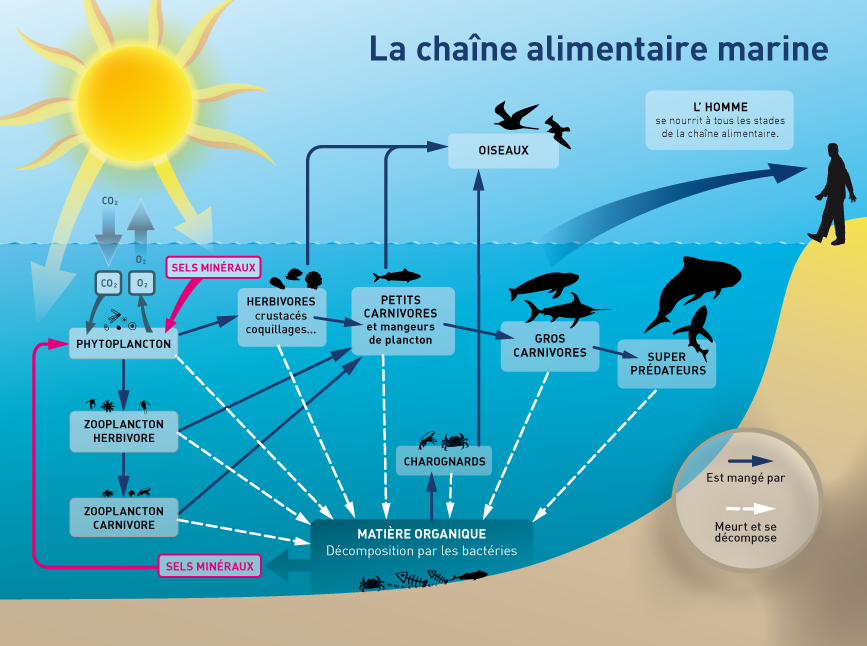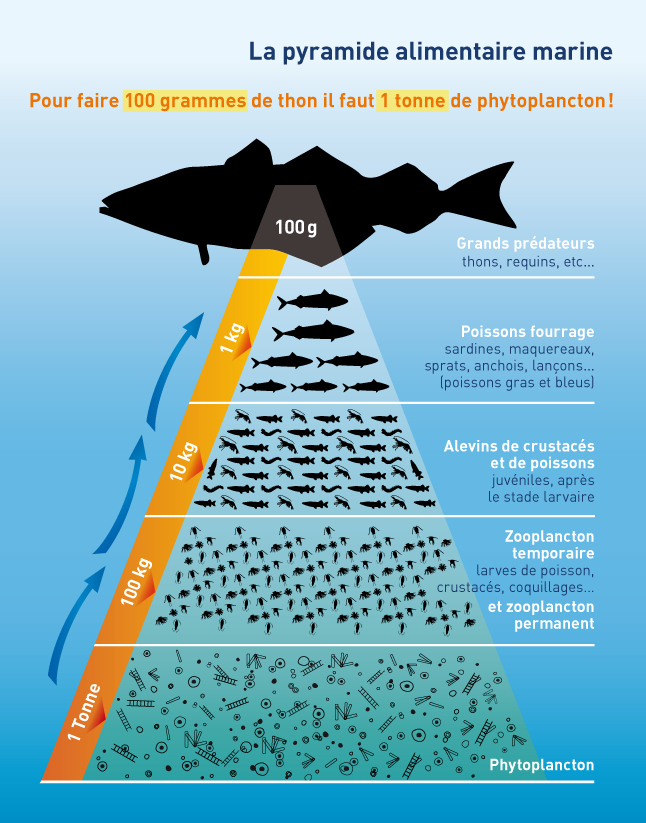The ocean feeds the food we eat
Marine animals cannot tell the difference between their food (krill, plankton or jellyfish for example) and the plastic in the ocean. When swallowed, microplastic releases chemical substances that poison the animal’s body, and larger pieces of plastic block their stomachs and kill them.
When we eat fish or shellfish, we eat more or less what they have eaten, so we are faced with the same pollutants.
The problem is that we are exposed, repeatedly, to chemical pollution that we cannot detect: it does not alter the taste or the consistency of what we eat.
Some figures on fish, seafood and shellfish
In Europe, the average shellfish consumer ingests 11,000 pieces of microplastic per year (23).
The food chain, how does it work?
These two excellent diagrams courtesy of the Plancton du Monde website website show clearly how the food chain works. One thing to remember: what small creatures eat eventually ends up inside bigger creatures, including humans.


